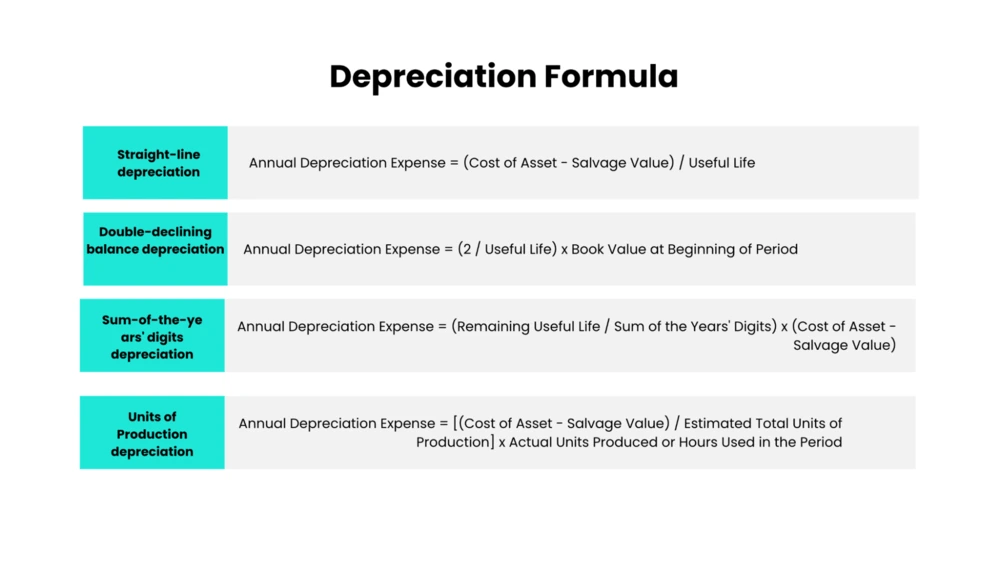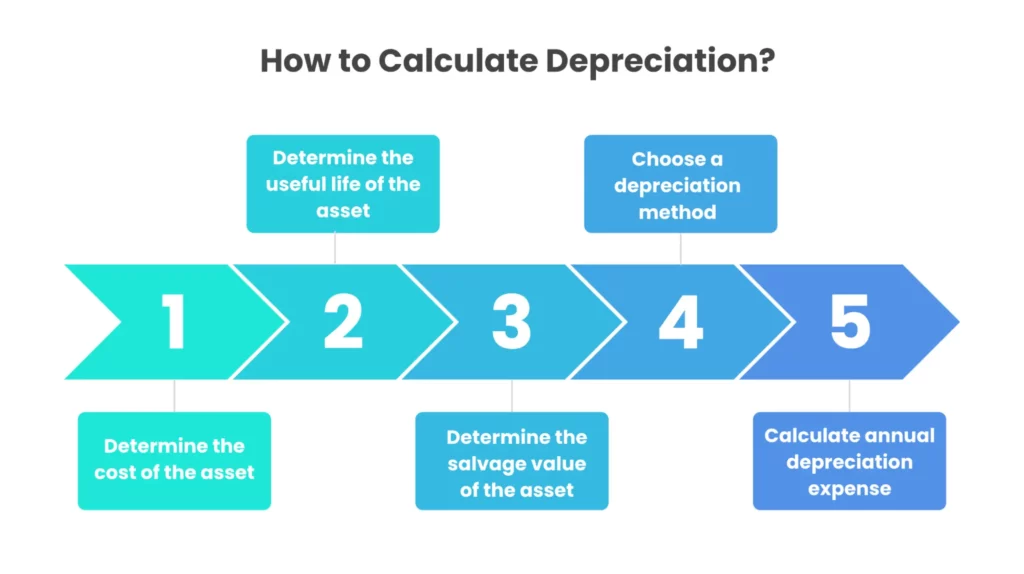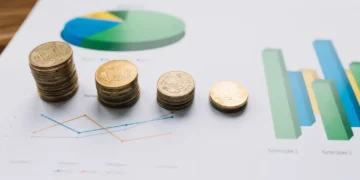Last Updated on November 28, 2025
What is depreciation?
Depreciation is the gradual decrease in the value of an asset over time due to wear and tear, obsolescence, or other factors that cause the asset to become less useful or valuable. In other words, it’s the fancy term for when your shiny new car or computer starts to lose its value as it gets older and less shiny.
Importance of understanding depreciation for financial planning
Understanding depreciation is crucial for financial planning because it can significantly impact the value of your assets and investments over time. It can affect your taxes, net worth, and ability to make smart financial decisions.
For example, if you’re considering buying a new car or a piece of equipment for your business, it’s important to understand how much the asset will depreciate over time so you can factor that into your financial projections and make informed decisions about when to replace or upgrade the asset.
Quick Read: TOP 10 Financial Planning Tools
Main points to remember
- Depreciation is calculated to allocate the cost of an asset over its useful life and to record the decline in value of the asset over time.
- Depreciation in accounting refers to the process of allocating the cost of an asset over its useful life.
- It is recorded in accounts as an expense in the income statement and as accumulated depreciation in the balance sheet.
- It is important for tax purposes because it allows businesses to reduce their taxable income by deducting the cost of their assets over their useful life, leading to a lower tax burden.
- Different assets have different useful lives and depreciation methods, allowing businesses to strategically choose which assets to purchase and how to depreciate them to maximize their tax benefits.
Suggested Read: The Ultimate Business Guide of Expense Management
Types of depreciation methods
There are several types of methods used in accounting and financial management. Some of the most common types include:
- Straight-line depreciation method
- Double-Declining balance depreciation method
- Sum of the year’s digits depreciation method
- Units of production depreciation method
There are other methods as well, but these are some of the most common. The method you choose will depend on the nature of the asset, your accounting and tax requirements, and your financial goals.
1. Straight-line depreciation method
This method assumes that an asset depreciates evenly over its useful life. It’s the simplest and most common method, and it involves dividing the cost of the asset by its useful life to determine the annual depreciation expense.
Why is the straight-line method important?
The straight-line method is important because it is the simplest and most widely used method in financial accounting. It allows businesses to spread the cost of an asset evenly over its useful life, making it easier to plan for future expenses and determine the overall profitability of the business.
When should we use the straight-line method?
This method is most appropriate for assets that have a predictable and consistent decline in value over their useful life. It is also useful for assets that are not likely to be sold or disposed of before the end of their useful life, as it spreads the cost of the asset evenly over its entire life.
Explanation of how it works?
In this method, the cost of an asset is divided by its useful life to determine the annual depreciation expense. This means that the same amount of expense is recorded each year of the asset’s useful life, regardless of changes in its value. The straight-line method is: (Cost of asset – Salvage value) / Useful life.
Examples of assets that use straight-line method
Assets that commonly use straight-line formula include buildings, furniture, and equipment such as computers, vehicles, and manufacturing machinery.
Advantages and disadvantages of using straight-line method
Advantages
- It is easy to calculate and understand
- It provides a steady, predictable depreciating expense
- It is useful for assets that have a consistent decline in value over time
Disadvantages
- It may not accurately reflect the actual decline in value of the asset over time
- It may result in a higher or lower book value of the asset compared to its fair market value
- It may not be the best method for assets that have a higher rate of decline in value in the earlier years of their life
Quick Read: 10 Best Financial Management Tools for CFOs
2. Double-Declining balance depreciation method
This method allows for a larger depreciation expense in the early years of an asset’s life and a smaller expense in later years. There are several types of accelerated methods, including the double-declining balance method and the sum-of-years’ digits method.
Why is the double-declining balance method important?
The double-declining balance method is important because it allows businesses to record higher depreciation expenses in the earlier years of an asset’s life when it is typically more productive and valuable, and lower depreciation expenses in later years.
When should we use the double-declining balance method?
The double-declining balance method is most appropriate for assets that have a higher rate of decline in value in the earlier years of their life, such as technology or manufacturing equipment. It may not be appropriate for assets that have a more consistent rate of decline in value over their useful life.
Explanation of how it works?
Under the double-declining balance method, the depreciation expense for each year is calculated by multiplying the asset’s book value at the beginning of the year by a fixed rate that is double the straight-line rate. The book value is reduced each year by the amount of depreciation expense recorded.
Examples of assets that use double-declining balance method
Assets that commonly use double-declining balance depreciation include manufacturing equipment, computer hardware, and vehicles.
Advantages and disadvantages of using double-declining balance method
Advantages
- It provides a higher depreciation expense in the earlier years of the asset’s life when it is typically more productive and valuable
- It can more accurately reflect the decline in value of an asset over time compared to straight-line method
- It can help businesses better plan for future expenses
Disadvantages
- It may result in a lower book value of the asset compared to its fair market value in later years
- It may not be appropriate for assets that have a more consistent rate of decline in value over their useful life
- It can be more complex to calculate and understand compared to straight-line formula
Quick Read: 6 Best Cash Flow Management Software
3. Sum of the year’s digits depreciation method
The sum-of-the-years’-digits (SYD) method is an accelerated method that takes into account the declining usefulness of an asset over its useful life. Under this method, the depreciation expense for each year is calculated by multiplying the depreciable cost of the asset by a fraction that represents the sum of the years of the asset’s useful life.
Why is the Sum of the years digits method important?
The Sum of the Years Digits method is important because it allows businesses to allocate a higher depreciation expense to the earlier years of an asset’s useful life, reflecting the fact that assets generally lose more value in their earlier years. This method can provide a more accurate reflection of an asset’s decline in value over time and can help businesses better plan for future expenses.
When should we use the Sum of the year’s digits method?
The Sum of the Years Digits method is most appropriate for assets that have a higher rate of decline in value in the earlier years of their life, such as technology or manufacturing equipment. It may not be appropriate for assets that have a more consistent rate of decline in value over their useful life.
Explanation of how it works?
Under the Sum of the Years Digits method, the total number of years in an asset’s useful life is added up and then each year’s depreciation expense is calculated by dividing the remaining useful life by the sum of the years digits and multiplying this fraction by the asset’s depreciable cost.
The sum of the years digits is calculated by adding up the number of years in the asset’s useful life, starting with the highest number in the first year and descending each year until the last year.
Examples of assets that use sum-of-the-years’ digits depreciation
Examples of assets that commonly use Sum of the Years Digits method include vehicles, machinery, and office equipment.
Advantages and disadvantages of using sum-of-the-years’ digits method
Advantages
- It allocates a higher depreciation expense to the earlier years of an asset’s useful life, reflecting the fact that assets generally lose more value in their earlier years
- It can provide a more accurate reflection of an asset’s decline in value over time compared to straight-line method
- It can help businesses better plan for future expenses
Disadvantages
- It can be more complex to calculate and understand compared to straight-line formula
- It may result in a lower book value of the asset compared to its fair market value in later years
- It may not be appropriate for assets that have a more consistent rate of decline in value over their useful life.
Quick Read: 9 Best Accounting Software
4. Units of production depreciation method
The units of production method takes into account the actual usage of an asset to determine its depreciation expense. This method is based on the assumption that an asset’s value decreases in proportion to the amount it’s used or produced.
Why is the Units of Production depreciation method important?
The Units of Production method is important because it allows businesses to allocate depreciation expense based on the actual usage or production of an asset. This method can provide a more accurate reflection of an asset’s decline in value over time, particularly for assets that are used for specific projects or purposes.
When should we use the Units of Production method?
The Units of Production method is most appropriate for assets that are used for specific projects or purposes, and whose value declines based on their usage rather than time.
Explanation of how it works?
Under the Units of Production method, the depreciation expense for a given period is calculated by multiplying the number of units produced or hours used in that period by the cost per unit or hour. The depreciation cost per unit is calculated by dividing the depreciable cost of the asset by its estimated total number of units or hours it will produce.
Examples of assets that use Units of Production method
Assets that commonly use Units of Production method include manufacturing equipment, vehicles, and machinery used in construction.
Advantages and disadvantages of using Units of Production method
Advantages
- It provides a more accurate reflection of an asset’s decline in value over time based on actual usage or production
- It can help businesses better plan for future expenses
- It may result in a higher book value of the asset compared to its fair market value in later years
Disadvantages
- It can be more complex to calculate and understand compared to straight-line
- It may result in greater fluctuations in depreciating expense from period to period based on usage or production
- It may not be appropriate for assets that have a more consistent rate of decline in value over their useful life.
Quick Read: 10 Best Business Budgeting Software
Depreciation formula
ADE= Annual Depreciation Expense
1. Straight-line method:
Formula: ADE = (Cost of Asset – Salvage Value) / Useful Life
2. Double-declining balance method:
Formula: ADE = (2 / Useful Life) x Book Value at Beginning of Period
3. Sum-of-the-years’ digits method:
Formula: ADE = (Remaining Useful Life / Sum of the Years’ Digits) x (Cost of Asset – Salvage Value)
4. Units of Production method:
Formula: ADE = [(Cost of Asset – Salvage Value) / Estimated Total Units of Production] x Actual Units Produced or Hours Used in the Period

Note that “Cost of Asset” refers to the initial purchase price of the asset, “Salvage Value” refers to the estimated value of the asset at the end of its useful life, and “Useful Life” refers to the estimated number of years or units of production over which the asset will be used.
How to calculate it?

First, you need to determine the cost of the asset, its useful life, and its salvage value. Once you have this information, you can choose one of these methods formulas to calculate the depreciation.
- Straight-Line Method
The straight-line method is a simple and widely used method that allocates an equal amount of depreciation expense to each year of an asset’s useful life.
Here are the steps to calculate the straight-line method:
1. Determine the cost of the asset: Let’s say a company purchases a machine for $10,000.
2. Determine the useful life of the asset: Let’s assume that the machine has a useful life of 5 years.
3. Determine the salvage value of the asset: Let’s assume that the salvage value of the machine is $1,000.
4. Calculate the depreciable cost: This is the cost of the asset minus its salvage value. In this case, it would be $10,000 – $1,000 = $9,000.
5. Divide the depreciable cost by the useful life: This gives you the annual depreciation expense. In this case, it would be $9,000 / 5 = $1,800.
6. Record the annual depreciation (ADE) expense: The company would record an ADE of $1,800 for the machine. - Double-Declining balance method
The double-declining balance (DDB) method is an accelerated method that assigns a higher depreciation expense in the earlier years of an asset’s useful life and a lower depreciation expense in the later years.
Here are the steps to calculate the double-declining balance depreciation method:
1. Determine the cost of the asset: Let’s say a company purchases a machine for $10,000.
2. Determine the salvage value of the asset: Let’s assume that the salvage value of the machine is $1,000.
3. Determine the useful life of the asset: Let’s assume that the machine has a useful life of 5 years.
4. Determine the depreciation rate: This is calculated by dividing 2 by the useful life. In this case, it would be 2 / 5 = 0.4 or 40%.
5. Calculate the annual depreciation expense: In year 1, the beginning net book value is $10,000, and the depreciation rate is 40%. Therefore, the annual depreciation expense would be $4,000 ( $10,000 x 40%). In year 2, the beginning net book value would be $6,000 ($10,000 – $4,000), and the annual depreciation expense would be $2,400 ($6,000 x 40%). This continues until the net book value reaches the salvage value.
6. Record the annual depreciation expense: The company would record an annual depreciation expense of $4,000 in year 1, $2,400 in year 2, and so on until the net book value reaches the salvage value. - Sum of the year’s digits depreciation method
The Sum of the Year’s Digits method is an accelerated method that results in higher expenses in the earlier years of the asset’s useful life and lower expenses in the later years.
Steps:
1. Determine the cost of the asset, salvage value, and useful life.
2. Add up the digits of the years of useful life. For example, if the useful life is 5 years, then the sum of the years digits would be: 5+4+3+2+1 = 15
3. Calculate the depreciation rate per year by dividing the remaining useful life of the asset by the sum of the years digits. For example, if the remaining useful life is 3 years, and the sum of the years digits is 15, then the rate would be 3/15 = 0.2 or 20%.
4. Calculate the annual depreciation expense by multiplying the rate by the asset’s depreciable base, which is the asset cost minus salvage value.
5. Repeat this calculation each year until the end of the useful life of the asset. - Units of production depreciation method
The Units of Production method is a variable method that results in higher depreciation expenses in periods when more units of production are produced and lower expenses in periods when fewer units are produced.
Steps for calculating it:
1. Determine the cost of the asset, salvage value, and total expected units of production over the asset’s useful life.
2. Calculate the depreciable cost of the asset by subtracting the salvage value from the cost of the asset.
3. Determine the units produced during a specific period.
4. Calculate the depreciation rate per unit by dividing the depreciable cost of the asset by the total units of production. For example, if the depreciable cost of the asset is $50,000 and the total units of production are 100,000, then the rate per unit would be $0.50.
5. Calculate the depreciation expense for the period by multiplying the rate per unit by the units produced during the period.
6. Repeat this calculation for each period until the end of the asset’s useful life.
7. Units of production method formula
Quick Read: Cash Management System – Types, How It Works and Best Practices
Factors Affecting Depreciation
1. Asset Type
Different types of assets are depreciated differently because they have varying useful lives, salvage values, and patterns of usage.
Examples:
- Assets such as buildings and land typically have long useful lives and therefore are depreciated over a longer period of time using the straight-line method.
- Assets such as vehicles and machinery typically have shorter useful lives and are depreciated over a shorter period of time using the double-declining balance or units of production methods.
Overall, the type of asset and its expected useful life, pattern of usage, and salvage value all play a role in determining the appropriate method to use.
2. Asset Age
Asset age is another important factor that affects depreciation. As an asset ages, it may become less efficient or may require more maintenance to keep it in good working condition. This can lead to decreased productivity, higher repair costs, and eventually, the need to replace the asset altogether.
Examples:
For example, let’s say a company purchases a delivery truck for $50,000. The truck has a useful life of 10 years and no expected salvage value. If the company depreciates the truck using the straight-line method, it would take a depreciation expense of $5,000 per year.
In summary, the age of an asset can affect its productivity, maintenance costs, and eventual salvage value, all of which can impact the rate of depreciation.
3. Salvage Value
Salvage value is the estimated value of an asset at the end of its useful life or when it is disposed of. It is also known as the residual value or scrap value of the asset.
When calculating depreciation, salvage value is subtracted from the asset’s cost to determine the depreciable base. This means that assets with higher salvage values will have lower depreciation expenses compared to assets with lower salvage values.
Examples:
For example, let’s say a company purchases a machine for $10,000 with a salvage value of $2,000 and a useful life of 5 years. Using the straight-line method, the annual depreciation expense would be $1,600 (($10,000 – $2,000) / 5). However, if the salvage value was only $500, the annual depreciation expense would be $1,700 (($10,000 – $500) / 5).
In summary, a higher salvage value will result in a lower depreciation expense, while a lower salvage value will result in a higher depreciation expense.
4. Useful Life
Useful life refers to the expected period that an asset will be useful and generate revenue for the business. The useful life of an asset is one of the most important factors affecting depreciation. Generally, the longer the useful life, the smaller the annual charge. Conversely, the shorter the useful life, the larger the annual depreciation charge.
Examples:
For example, let’s say a company buys a new delivery truck for $50,000. The company expects the truck to last for 10 years, after which it will have no salvage value. The annual depreciation charge would be $5,000 ($50,000/10 years).
In a nutshell, the useful life of an asset is a critical factor affecting depreciation, and businesses should carefully consider the expected useful life when selecting an appropriate depreciation method.
Importance of depreciation for tax Purposes
When it comes to taxes, depreciation can be your best friend.
Depreciation is important for tax purposes because it allows businesses to reduce their taxable income by deducting the cost of their assets over their useful life. This means you pay less in taxes overall. Who doesn’t love paying less taxes?
Plus, since different assets have different useful lives and depreciation methods, you can strategically choose which assets to purchase and how to depreciate them to maximize your tax benefits.
Of course, it’s important to play by the rules and make sure you’re using the appropriate depreciation method and following all tax laws and regulations. But with proper planning and execution, depreciation can be a powerful tool for reducing your tax burden. So embrace the power of depreciation, and keep that tax bill as low as possible!
Explanation of how depreciation affects taxes
Depreciation can have a significant impact on taxes for businesses and individuals. Essentially, depreciation allows taxpayers to deduct the cost of an asset over its useful life, rather than deducting the full cost of the asset in the year it was purchased. This can result in a lower taxable income and therefore, a lower tax liability.
For businesses, depreciation can be particularly important as it can help to reduce their taxable income and ultimately, their tax bill. This can free up cash flow for the business to reinvest in operations, buy new equipment or make other necessary expenses.
Conclusion
In conclusion, depreciation is a crucial aspect of accounting and financial management. By spreading the cost of an asset over its useful life, businesses and individuals can lower their taxable income and ultimately reduce their tax bill. Overall, understanding and effectively managing depreciation is key to maximizing cash flow, profitability, and minimizing tax liability.
FAQs
The 5 methods of depreciation are straight-line depreciation, accelerated depreciation, units of production depreciation, sum-of-years-digits depreciation, and double-declining balance depreciation.
Depreciation is calculated to allocate the cost of an asset over its useful life and to record the decline in value of the asset over time.
Depreciation in accounting refers to the process of allocating the cost of an asset over its useful life.
It is recorded in accounts as an expense in the income statement and as accumulated depreciation in the balance sheet.
Accumulated depreciation is the total depreciation expense of an asset that has been recorded over its useful life.
The difference between depreciation expense and accumulated depreciation is that depreciation expense represents the amount of an asset’s cost that is being allocated to each accounting period, while accumulated depreciation represents the total amount of an asset’s cost that has been allocated to all accounting periods to date.
Accumulated depreciation is a contra asset account, which means it is a negative asset account that offsets the value of the corresponding asset.
The formula for accumulated depreciation is the total number of years an asset is expected to be useful divided by the cost of the asset.
Accumulated depreciation is recorded on a balance sheet as a negative asset account, and it is subtracted from the corresponding asset account to determine the net book value of the asset.
Amortization is the process of allocating the cost of intangible assets over their useful life.
The difference between depreciation and amortization is that depreciation is used to allocate the cost of tangible assets, while amortization is used to allocate the cost of intangible assets.
An example of amortization is the cost of a patent being allocated over its useful life.
Amortization is considered an expense in accounting and is recorded as such in the income statement.
Capital expenditure refers to the purchase of long-term assets, while depreciation refers to the gradual reduction in the value of those assets over their useful lives. When a company incurs a capital expenditure, it invests in a long-term asset that generates returns over several years, but as the asset wears down over time, its value decreases, which is known as depreciation. Capital expenditures create assets that are depreciated over time, resulting in an expense that reduces the company’s net income.










Discussion about this post